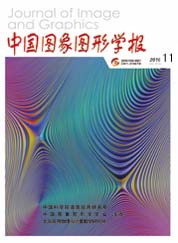
加移动因子的C-V模型
摘 要
在变分水平集方法中,C-V模型的优点之一是能够提取以非梯度形式定义的图像边界,然而,在提取该类型边界时,模型仅考虑了图像各区域的均值信息而没有考虑图像的局部信息,因此尽管C-V模型能够得到渐进型边界图像的分割结果,但是存在分割误差。将移动因子引入到C-V模型以解决上述问题。其中移动因子定义为图像局部凸凹性的函数,通过该因子可以调整模型0-水平面的高度,进而使得解平面与目标所在平面更加接近或重合,以达到消除分割误差的目的。文中给出了偏微分形式的模型,并通过实验验证了模型的有效性。
关键词
The C-V model with motion factor
WANG Xiaotao, WU Jitao(School of Mathematics and Systems Science,Beijing University,Beijing 100191) Abstract
One advantage of C-V model among the variational level set methods is that it can detect image boundaries which were not defined by gradient. However, when detecting these type boundaries, the C-V model only consider the mean value of each region without local information, so though the C-V model can get non-gradient defined image boundary, its segmentation result contains errors. The above problem is solved by importing the motion factor to the C-V model in this paper. Where, the motion factor is defined as a function of local convexities of image. By adjusting parameters of the motion factor, the novel model can adjust the height of its 0-level set, i.e., can make the 0-level set get close to the plane which the target belongs to, so can eliminate the partition errors. We present the partial differential model, and experiments validate the quality of the segmentations obtained.
Keywords
|



 中国图象图形学报 │ 京ICP备05080539号-4 │ 本系统由
中国图象图形学报 │ 京ICP备05080539号-4 │ 本系统由